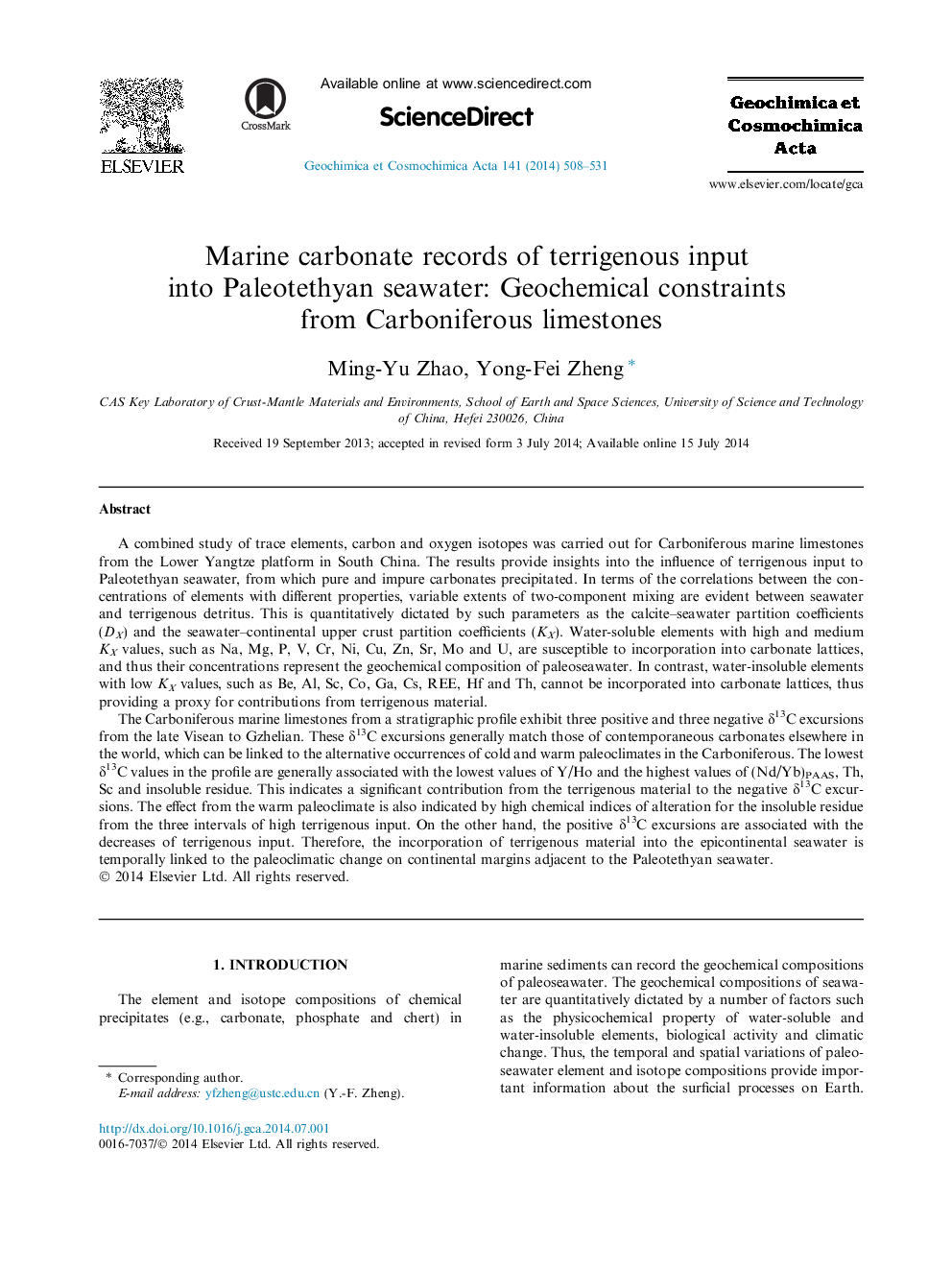| Article ID | Journal | Published Year | Pages | File Type |
|---|---|---|---|---|
| 6438259 | Geochimica et Cosmochimica Acta | 2014 | 24 Pages |
Abstract
The Carboniferous marine limestones from a stratigraphic profile exhibit three positive and three negative δ13C excursions from the late Visean to Gzhelian. These δ13C excursions generally match those of contemporaneous carbonates elsewhere in the world, which can be linked to the alternative occurrences of cold and warm paleoclimates in the Carboniferous. The lowest δ13C values in the profile are generally associated with the lowest values of Y/Ho and the highest values of (Nd/Yb)PAAS, Th, Sc and insoluble residue. This indicates a significant contribution from the terrigenous material to the negative δ13C excursions. The effect from the warm paleoclimate is also indicated by high chemical indices of alteration for the insoluble residue from the three intervals of high terrigenous input. On the other hand, the positive δ13C excursions are associated with the decreases of terrigenous input. Therefore, the incorporation of terrigenous material into the epicontinental seawater is temporally linked to the paleoclimatic change on continental margins adjacent to the Paleotethyan seawater.
Related Topics
Physical Sciences and Engineering
Earth and Planetary Sciences
Geochemistry and Petrology
Authors
Ming-Yu Zhao, Yong-Fei Zheng,
